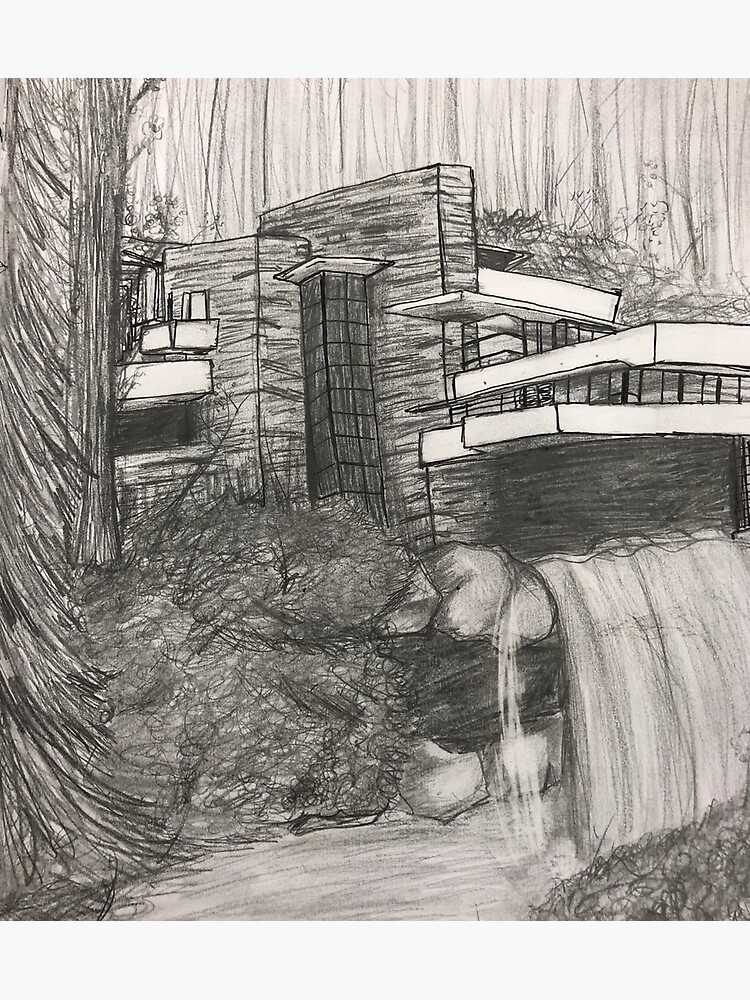Looking at Art and Racism: Changing people's belief of the world using Art, Series One Day Three.

“The mission of an architect is to help people understand how to make life more beautiful, the world a better one for living in, and to give (a) reason, rhyme, and meaning to life.”
– FRANK LLOYD WRIGHT, 1957.
Day One: Frank Lloyd Wright's "Falling Water."Frank Loyd Wright is often described as the Master
of architecture and in many ways he was. At first glance, you might feel this quote is perfect if
you replaced the word 'architect' with "life" But the fact that he chose the word "architect" rather
than "life," says a lot about Frank Lloyd Wright. He was a man who lived to excess he made a
fortune but was forever in debt because he lived lavishly and had everything he wanted. Wright once
admitted that his poor finances were likely due to his expensive tastes in wardrobe and vehicles, and
the extra luxuries he designed into his house.
He is so like the wealthy in this country today; that flaunt their wealth and then wonder why people
loot when there is civil unrest. I am not condoning looting or violence, just giving it some under-
standing. Then as now, he was oblivious to the divide between rich and poor. Today that divide be-
tween rich and poor becomes wider and wider. The rich, buy million-dollar homes, expensive cars,
and eat at fancy restaurants every night. Can we be surprised that people will use any means they
can to emulate this lifestyle? Add to that the terrible racism we have, where African Americans are
always at the bottom of the pile.
Frank Lloyd Wright was born to a Welsh mother and a father who was a Pastor on June 8th,1867, in
Richland Center Wisconsin. His mother came from a Welsh family " Lloyd Jones," That had settled
in Spring Green a rural part of Wisconson. It seems this landscape which he returned to frequently
during his childhood, as his parents moved from place to place, and throughout his life and some
geometric blocks (made of maple) called " Frobel gifts" that he played with for hours as a child, were
to be an influence on his architecture for the rest of his life. Wright's father divorced and abandoned
his family when Wright finished high school, something Wright was to repeat in his life-time. Frank
Lloyd Wright is famous for the "Prairie Style" or flat houses that mimicked the flat prairie landscape
he had grown up with and the "Organic" Style buildings that merge with the landscape. When I
think of "Organic line," something I use frequently in my own work, I think of curvy lines, But I was
born and grew up in the curvacious Devonshire Landscape full of rounded hills. It is interesting to
think about how the landscape of our childhood may influence our art?
For Falling water, Wright is a master of ingenuity. It was built by Wright in 1935 when Wright was
68 years old, for the rich Kaufman family as a weekend home. It is said that Wright visited the
property where the Kaufman's liked to splash in the water and completed the design (which I have
included) that same night. He made countless drawings after this, so it is hard to know which, was
the original. But the fact that all of the drawings are exactly like the house he built, shows clearly
the vision of the man. He designed the interior and all the furniture for the building, which he
frequently did and was meticulous in his attention to detail. I have not been to "Falling Water", but
from the countless videos and books I have read, this building bought together perfectly
three main principles: his concept of organic building, the requirements of his patron, and his
spiritual needs as an artist. It was important to Wright that at all times the person should question
the notion of whether they are inside or outside at "Falling Water." That is why he used locally
quarried rock in both parts of the building. The stacking of each layer of the building echoes the
stacking of rocks in the stream and helps it, to sit comfortably in its environment. The corner
windows on each side of the building, open up so that you are literally both inside and outside of
the building at the same time. The stream intentionally flows through the basement, so that on
colder or wet days the family can still paddle there and nature is inside. It also works perfectly as a
harmonious contrast to Wright's building. It is ironic that this building was built as a luxury for the
rich, But it is now a museum and available for all to see. Seeing this mastery of the arts is definitely
on my bucket list!


Comments
Post a Comment